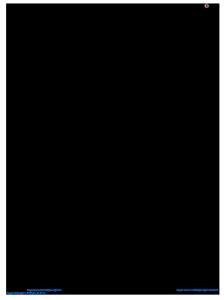The effect of graphene oxide modified short carbon fiber on the interlaminar shear strength of carbon fiber fabric/epoxy
- PDF / 2,092,676 Bytes
- 9 Pages / 595.276 x 790.866 pts Page_size
- 103 Downloads / 331 Views
The effect of graphene oxide modified short carbon fiber on the interlaminar shear strength of carbon fiber fabric/epoxy composites Hui-Jie Nie1,2, Zhi Xu1, Bo-Lin Tang1, Chen-Yang Dang1, Ya-Ru Yang1, Xiao-Ling Zeng1, Ben-Cai Lin2, and Xiao-Jun Shen1,* 1 2
College of Materials and Textile Engineering, Jiaxing University, No. 118 Jiahang Road, Jiaxing 314001, Zhejiang, China College of Materials Science and Engineering, Changzhou University, No. 21 Gehu Road, Changzhou 213164, Jiangsu, China
Received: 8 June 2020
ABSTRACT
Accepted: 1 September 2020
Fiber-reinforced polymer composite laminate is weak in the Z-direction, which limits its application. Herein, short carbon fiber (SCF) was decorated with graphene oxide (GO) to form GO@SCF, which was used to improve epoxy matrix and thereby the interlaminar shear strength (ILSS) of carbon fiber fabric (CFF)reinforced epoxy composites. The effect of GO@SCF on the ILSS of the composite has been examined. It showed that the optimal content of GO@SCF was 0.1 wt%, and the maximum value of ILSS reached 59.4 MPa, which was 14.7% higher than the pure CFF/epoxy composite. The neat SCF was also employed to enhance the ILSS for the purpose of comparison. The results indicate that GO@SCF has better effect on reinforcing the ILSS than the neat SCF. This study provides an effective approach for the reinforcement of the ILSS of CFF-reinforced epoxy composites.
Ó
Springer Science+Business
Media, LLC, part of Springer Nature 2020
Introduction Carbon fiber is favored in the application of fiberreinforced polymer composites due to its excellent mechanical properties and light weight. Among them, carbon fiber fabric (CFF)-reinforced epoxy composite is often used as one kind of ideal structural material and widely used in aerospace and other fields [1–4]. However, unlike glass fibers and other fibers with functional groups on the surface, the Handling Editor: Jaime Grunlan.
Address correspondence to E-mail: [email protected]
https://doi.org/10.1007/s10853-020-05286-y
chemically inert surface of carbon fiber makes it difficult to form an effective interfacial interaction with the resin matrix. Therefore, CFF-reinforced epoxy laminate composites have the problem of weak interlayer performance, which affects the application of the materials in specific environments seriously [5–7]. Therefore, the improvements of the interlayer performance of CFF/epoxy composites and investigation on the mechanism have prominent practical significance.
J Mater Sci
At present, many methods have been explored to enhance the ILSS of CFF/epoxy composites, such as modified fibers, matrix modifications, Z-pinning [8, 9]. For practical industrial applications, compared with modifying fiber fabrics, the introduction and modification of fillers is often considered as more convenient, environment-friendly and energy-saving method to improve the mechanical properties of the composite [10, 11]. Short carbon fiber (SCF) has excellent properties similar to continuous counterparts, and the advantages of low cost and
Data Loading...











